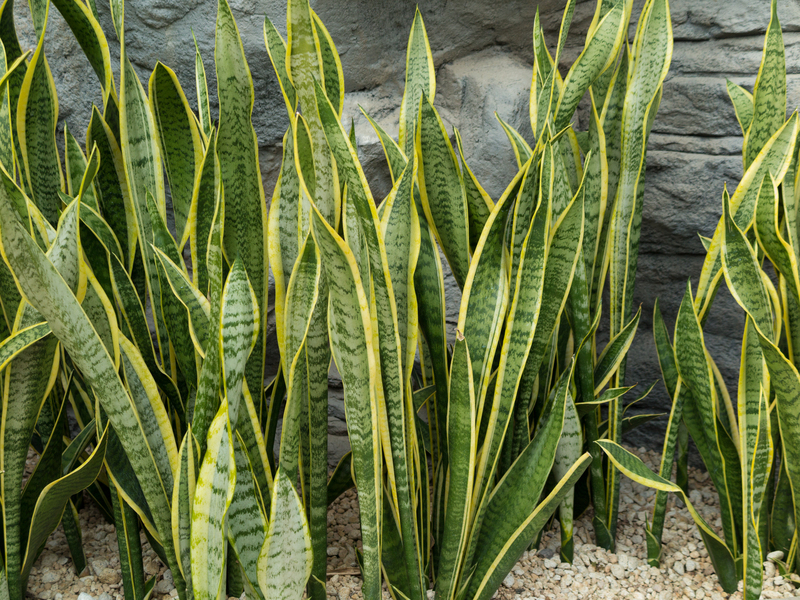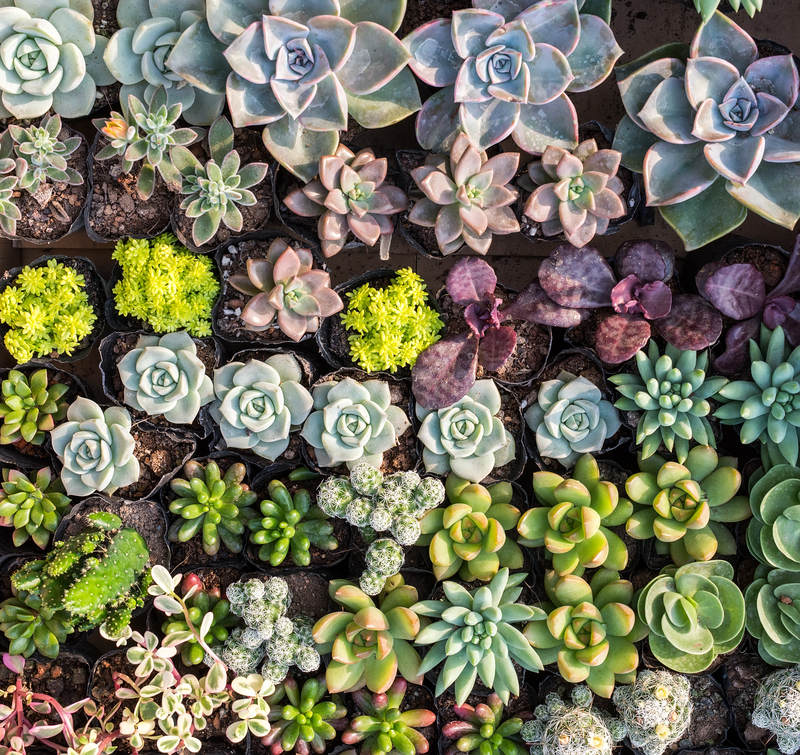Vertical Gardening: Innovating with Nature in Urban Spaces
Posted on 05/06/2025
Vertical Gardening: Innovating with Nature in Urban Spaces
Introduction to Vertical Gardening
Urban spaces across the globe are rapidly evolving, often at the expense of green areas. Vertical gardening, a revolutionary approach to traditional horticulture, is emerging as a transformative solution to this challenge. By utilizing vertical surfaces--walls, fences, balconies, or specially designed panels--city dwellers can enjoy lush greenery, improve air quality, and even harvest fresh produce, all within compact footprints. If you're curious about nature-inspired innovations in urban environments, vertical gardening offers a sustainable and aesthetically pleasing avenue worth exploring.

What is Vertical Gardening?
Vertical gardening, also known as vertical green walls or living walls, involves cultivating plants upwards rather than outwards. Unlike traditional gardens, which spread horizontally across the ground, vertical gardens make smart use of available vertical spaces. This practice can involve everything from climbing plants trained onto trellises to complex, hydroponic systems attached to the exteriors or interiors of buildings.
By maximizing unused space, vertical gardening techniques make it possible to grow flowers, herbs, vegetables, and even small fruits in locations that would otherwise be inhospitable to traditional gardens, such as apartments, rooftops, or office walls.
Key Benefits of Vertical Gardens
- Space Efficiency: They are ideal for urban areas with limited ground area, as they expand growing possibilities vertically.
- Enhanced Aesthetics: Vertical gardens can transform bare walls and structures into vibrant, living works of art.
- Improved Air Quality: Plants act as natural air filters, removing pollutants and releasing oxygen.
- Thermal Insulation: Living walls help regulate building temperatures, lowering energy costs.
- Noise Reduction: Dense plant coverage can dampen urban noise, creating quieter environments.
- Biodiversity Support: These gardens provide habitats for pollinators and beneficial insects.
All of these advantages make vertical gardening solutions a compelling option for city dwellers looking to reconnect with nature in innovative ways.
Types of Vertical Gardens
From simple DIY projects to sophisticated commercial installations, there's a vertical gardening system suited for every need. Here are the most common types:
1. Green Walls (Living Walls)
Green walls are one of the most visually striking forms of vertical gardens. These are walls covered with a network of plants, which are rooted in soil or a substrate and may be watered via integrated irrigation systems. Green walls can be found on the sides of buildings, inside office lobbies, or in public spaces, serving both aesthetic and functional purposes.
2. Vertical Planters and Towers
These systems use stacked modules, planters, or recycled materials (like plastic bottles or pallets) to create vertical rows of crops. Vertical planter systems work especially well for growing herbs, succulents, and leafy greens on balconies or patios.
3. Trellises, Arbors, and Espaliers
Traditional methods of training climbing or vining plants--such as beans, tomatoes, or ivies--on structures like trellises or arbors are timeless vertical gardening techniques. Espalier systems allow trees and shrubs to be trained against a flat surface in attractive patterns.
4. Hydroponic and Aeroponic Vertical Farms
Modern vertical farming uses soil-less cultivation methods like hydroponics or aeroponics, often inside vertical racks within greenhouses or high-tech buildings. These advances make it possible to produce large volumes of fresh vegetables year-round, regardless of external climate conditions.
How to Start a Vertical Garden
Setting up your own vertical garden in an urban space can seem daunting, but with the right planning and a little creativity, anyone can succeed. Follow these essential steps to embark on your vertical gardening journey:
Step 1: Assess Your Space
Begin by identifying available vertical surfaces--this could be a sunny balcony wall, a garden fence, or even an indoor partition. Consider the amount of sunlight the area receives daily, as this will influence which plants you can grow.
Step 2: Choose Your System
- Modular Panels: Ideal for large-scale installations, either indoors or outdoors.
- Pocket Planters or Fabric Wall Panels: Great for smaller spaces, lightweight, and easy to mount.
- Trellises or Obelisks: Perfect for vining plants or for adding height to ground beds.
- DIY Solutions: Use recycled containers, wooden pallets, or PVC pipes for creative projects.
Step 3: Select Your Plants
Plant selection is critical for thriving vertical green spaces. Consider the following factors:
- Light Requirements: Sun-loving plants for bright spaces, shade-tolerant species for low-light areas.
- Growth Habits: Opt for compact, trailing, or climbing varieties for easy coverage.
- Maintenance Needs: Choose hardy species if you prefer low-maintenance gardening.
- Edible vs. Ornamental: Decide if you want to harvest herbs and vegetables or simply beautify your space with flowers and foliage.
Step 4: Install Irrigation and Maintenance Systems
Urban vertical gardens often need efficient watering solutions. Drip irrigation, self-watering pots, or hydroponic systems help deliver moisture directly to plant roots and minimize water waste. Ensure your installation allows for easy access to fertilize, prune, and replace plants as needed.
Step 5: Monitor, Maintain, and Enjoy
With your garden in place, monitor plant health regularly, tend to nutrition and hydration needs, and enjoy the visual and health benefits your vertical greenery offers.
Best Plants for Vertical Garden Projects
When it comes to choosing flora for your vertical oasis, opt for varieties known to thrive in vertical setups and urban conditions. Here's a list of top choices:
- Ferns: Excellent for shady, humid environments and indoor installations.
- Pothos (Epipremnum aureum): A resilient vining plant that purifies air and requires minimal care.
- Succulents: Drought-tolerant and available in many striking shapes and colors.
- Herbs: Basil, mint, parsley, chives, and thyme are compact and harvestable year-round.
- Strawberries: These compact fruits produce well in vertical planters.
- Lettuce and Spinach: Fast-growing leafy greens perfect for edible vertical gardens.
- Ornamental Grasses: Add texture and movement to living walls.
- Climbing Flowers: Morning glory, clematis, and sweet pea add fragrant, colorful blooms.
The Future of Vertical Gardening in Urban Environments
*Vertical gardening* is much more than a trend--it's an innovative response to the ongoing challenges of urbanization and climate change. As cities become denser, green spaces are shrinking, but the human need for connection with nature persists. Innovative vertical gardens offer a solution by infusing cityscapes with life, providing environmental, psychological, and social benefits.
From city hall buildings adorned with living walls to restaurant rooftops that double as edible gardens, the adoption of vertical gardening continues to grow. Emerging technologies--such as automated irrigation, integrated lighting, and remote plant health sensors--will make these systems more accessible and efficient in the years ahead. Urban planners and architects are now factoring in vertical green spaces as essential elements of sustainable city design.
Benefits of Vertical Gardens for Urban Communities
- Community Engagement: Shared urban gardens foster relationships and promote communal well-being.
- Educational Value: Living walls and farms offer learning opportunities about botany, sustainability, and nutrition.
- Urban Food Security: Rooftop and wall gardens help provide fresh, local produce to neighborhoods.
- Biodiversity Corridors: Connected vertical installations serve as green corridors for pollinators and birds.
Tips for Successful Vertical Gardening in Urban Spaces
If you're ready to embrace vertical gardening solutions in your urban home or community, keep these expert recommendations in mind:
- Start small and scale up: Experiment with a few plants before investing in larger systems.
- Invest in quality infrastructure: Sturdy support structures and reliable irrigation make a world of difference.
- Plan for access: Ensure you can easily reach plants for pruning, replanting, and maintenance.
- Regularly monitor plant health: City air and weather can stress plants; keep an eye out for pests or diseases.
- Mix ornamental and edible species: Combine beauty and utility for maximum enjoyment.

Inspiring Examples of Vertical Gardens Around the World
Modern cities are embracing the vertical gardening revolution. Here are a few spectacular examples that demonstrate what's possible:
- Musee du Quai Branly (Paris, France): This museum boasts a 200-meter-long living wall designed by botanist Patrick Blanc, featuring over 15,000 plants from around the world.
- One Central Park (Sydney, Australia): One of the world's tallest vertical gardens, this residential tower integrates massive green walls that improve building insulation and urban biodiversity.
- CaixaForum (Madrid, Spain): A stunning, 24-meter-high vertical garden covering a historic wall and delighting passersby.
- Sky Greens (Singapore): An advanced urban vertical farming system that grows leafy greens on rotating towers, maximizing light exposure and yield.
These living installations prove that vertical green innovations can change the face of urban architecture and contribute meaningfully to city life.
Conclusion: Embrace Vertical Gardening for Greener Urban Spaces
Vertical gardening represents a beautiful synergy between innovation and nature. It is a powerful step toward more sustainable, resilient, and livable cities. Whether you're an apartment dweller craving natural beauty, a community leader seeking ways to green your neighborhood, or a property developer aiming for sustainability, vertical gardens provide flexible, practical, and inspirational solutions.
Now is the perfect time to reimagine our urban environments--not as sterile, concrete jungles, but as thriving ecosystems teeming with life. By adopting vertical gardening techniques in city spaces, we can reclaim the sky, cultivate well-being, and inspire future generations to innovate with nature.
Ready to start your own vertical garden? Choose a wall, pick your plants, and watch how a little upward thinking can transform your world.

